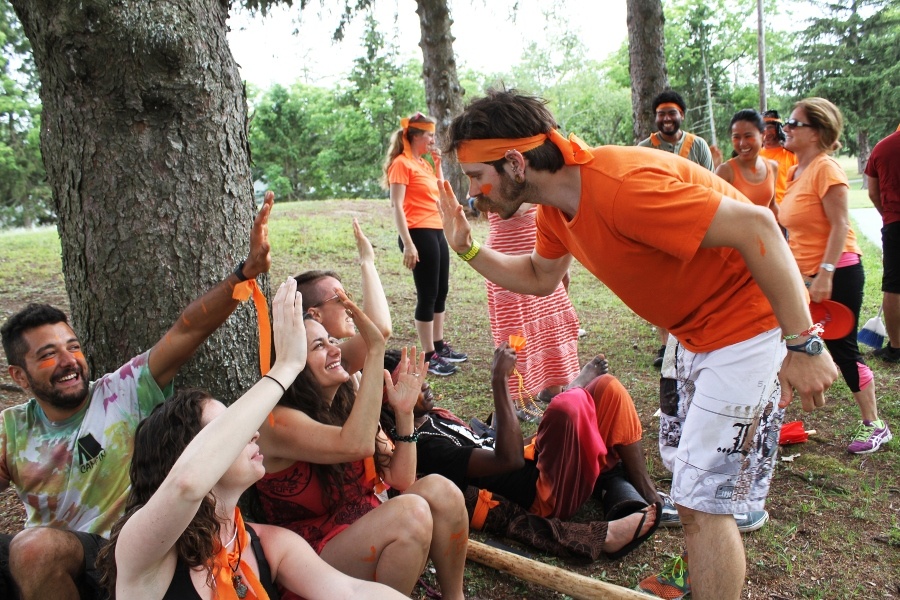
Photograph: Connection Camp.
Have you ever wished you could go back to summer camp?
The cabins, the canoes, the campfire, the talent show. The freedom of summer, minus the homesickness and cafeteria food. Now imagine doing it as an adult. No kids, no phones, no responsibilities. Just a few days to disconnect and play.
Would you sign up? Thousands already are. Across Ontario and beyond, adult summer camps are becoming a serious business.
Would you sign up to invest? Many already are. Across Ontario and beyond, adult summer camps are becoming a serious business. (Yes, I know I just repeated myself!).
Consider the scale of traditional camps. In Ontario alone, more than 400 accredited children’s camps welcome over 350,000 kids each summer, bringing in as much as $360 million a year. Most of those camps run as nonprofits, built on mission and tradition. But here’s the twist: adult camps flip that script. They’re for-profit, niche-focused, and designed to turn cabins that sit empty in September into money-making engines.
Why are adults so eager to go? The reasons are easy to spot. Who isn’t looking for connection in a world that feels increasingly disconnected? Who doesn’t crave a digital detox from endless notifications? Who wouldn’t want a weekend to try archery again, swim in a lake, or belt out a song at a talent show without worrying about work on Monday?
The financial model also makes sense. If a child’s camp charges $700 to $1,000 for a week, an adult camp can ask $450 to $950 for a single weekend. Smaller groups, but a bigger return per person.
These weekends are nonstop content factories. Camp Social in the U.S. sold 150 tickets in 24 hours with that exact formula. Add in their sponsors, such as Dunkin’ trucks handing out iced coffee or Amazon Prime screening movies under the stars, and suddenly, camp isn’t just a getaway. Could Ontario camps pull off the same feat?
Of course, it’s not without risk. Would you pay nearly a thousand dollars for a weekend if the food was bad or the check-in was chaotic? One logistical hiccup can sour the entire experience. Niche positioning, such as women-only or LGBTQ+, can drive fierce loyalty, but does it limit the market too much? And what happens when the weather turns cold? Can ad lt camps survive on a three-month season?
This is where Ontario may have the real advantage. What cabins didn’t sit empty all winter? Envision cross-country skiing, snowshoeing, ice fishing, and relaxing in a frozen lake sauna. Picture Tim Hortons marshmallows by the fire or Patagonia jackets on every camper. Why should Scandinavia claim ownership of the winter wellness trend when Ontario has the same raw ingredients? The question is, who will be bold enough to try it?
Examples already exist. Camp Reset set offers a sober-friendly digital detox in September. Canadian Adventure Camp in Temagami hosts adult weeks filled with waterskiing, sauna sessions, and talent shows. Camp Tamakwa in Algonquin Park blends creativity with nature. Two Islands Weekend transforms a Haliburton camp into a wilderness escape. The Madawaska Kanu Centre teaches whitewater kayaking with lodge comfort. Each has carved a niche, but who will scale it? Who will turn nostalgia into a year-round business?
So what do adult camps really represent? A passing fad or a sustainable industry? The evidence points to both. Nostalgia gets people in the door. Wellness justifies the price. An innovative business keeps the lights on.
Which leaves one final question. If given the chance to unplug, reconnect, and play like a kid again, would you go back to camp?
Now, a bonus final question. Is this a viable, long-term business opportunity?
